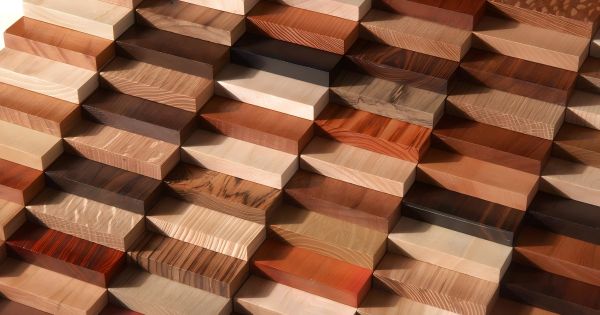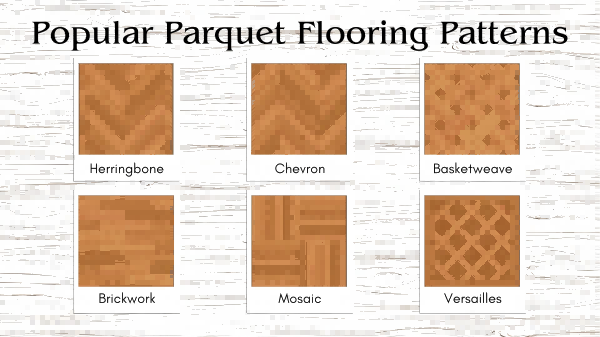One of the most crucial factors that purchasers consider when renovating their homes is the flooring type. Flooring has an impact on a room’s appearance, but it also has a significant impact on a home’s overall worth. As homeowners and real estate investors look to improve the resale value of their properties, they often wonder: What type of flooring is worth more in the resale market?
In this article, we will explore how wood species and patterns influence the value of flooring in the resale market. By examining different wood species, their unique characteristics, and their patterns, we’ll be able to determine which flooring options offer the most return on investment (ROI) for homeowners looking to sell their property.
Table of Contents
ToggleThe Basics of Flooring and Its Impact on Home Resale Value
When choosing flooring, potential buyers often envision how it will look and function in their space, as well as how it will add to the overall appeal of the property. The flooring type that appeals to the masses is durable, and enhances the aesthetics of a home, which is more likely to provide a better return on investment.
Wood flooring is one of the most sought-after types of flooring due to its timeless appeal, versatility, and ability to improve a home’s resale value. However, not all wood types and patterns are created equal. The species of wood and the pattern in which it is laid can influence how much a property will sell for.
Understanding Wood Species
Different wood species have different qualities, appearances, and levels of durability. Some species are more commonly used for flooring and tend to have higher resale values. The key wood species that are often used for flooring include:
Oak (Red Oak and White Oak)
Oak is one of the most common wood species used in flooring, and it consistently ranks high in terms of resale value. Oak flooring can be stained a number of colors and is long-lasting and scratch-resistant. Although White Oak is marginally more moisture-resistant than Red Oak, both species are renowned for their eye-catching grain patterns.
- Red Oak: Red oak is recognized for its warm tones and noticeable texture, which give a room personality. It is perfect for homes that are rustic and traditional.
- White Oak: Slightly more expensive than red oak, white oak offers a more subdued grain and is perfect for modern homes or those looking for a more neutral tone.
Resale Value:
- Oak flooring typically adds 70%-80% of its cost back to the home’s value when it comes time to sell.
- Homes with oak flooring appeal to a broad audience and are likely to sell faster and for a higher price.
Maple
Maple is another popular hardwood species used in flooring due to its smooth grain and light, natural color. It’s durable, resists wear, and is perfect for homes with high foot traffic.
- Appearance: Because of its uniform color and light weight, maple is a great choice for modern or Scandinavian-style homes.
- Durability: Maple is harder than oak, making it resistant to dents and scratches.
Resale Value:
- Maple floors generally yield a similar ROI to oak, providing a solid 70%-80% return on investment.
- The clean, modern appearance of maple can increase the home’s appeal to buyers looking for a minimalist aesthetic.
Hickory
Since hickory is one of the hardest domestic wood species, it’s perfect for high-traffic areas like kitchens and hallways. Its wide, bold grain patterns and light to medium brown colors give it a distinctive look.
- Appearance: Hickory floors have a more dramatic, contrasting grain pattern, making them ideal for rustic or country-style homes.
- Durability: Due to its hardness, hickory is highly durable and resistant to wear.
Resale Value:
Homes with hickory flooring can see an increase in resale value, especially if the home has a rustic or farmhouse aesthetic. ROI can range from 60%-75%.
Walnut
Walnut is a luxurious wood species that is highly prized for its rich, dark color and smooth, even grain. While walnut floors are on the more expensive side, they can significantly increase a home’s value due to their sophistication and elegance.
- Appearance: Walnut has a deep, rich color that darkens over time, making it ideal for modern, upscale homes.
- Durability: Walnut is more likely to have dents and scratches since it is softer than oak or maple. However, its beauty and uniqueness often justify the trade-off.
Resale Value:
Walnut flooring is generally more expensive but provides a significant ROI if the home is in a higher-end market. Expect an ROI of 60%-70%, especially in luxury properties.
Cherry
Another hardwood with warm reddish-brown tones that deepen with age is cherry wood. It is quite popular for historic homes because of its smooth texture and rich color.
- Appearance: Cherry flooring offers a unique and timeless look, ideal for older or historic homes.
- Durability: While cherry is relatively soft compared to oak or maple, its natural beauty and timeless appeal make it a popular choice.
Resale Value:
Cherry wood floors may provide a 60%-70% ROI, but their appeal is more niche, catering to buyers who appreciate classic, antique aesthetics.
Wood Flooring Patterns and Their Impact on Resale Value
In addition to the species of wood, the pattern in which the flooring is installed also plays a crucial role in determining its appeal to buyers and its effect on resale value. The following are a few of the most widely used wood flooring designs:
Straight Lay
The straight lay is the most traditional and widely used pattern for wood flooring. The boards are arranged in parallel rows, either horizontally or vertically, and the edges of the boards are aligned.
Resale Value: This timeless, straightforward design complements practically every type of home. It is typically the most economical pattern and provides a high return on investment (ROI), typically between 70% and 80%.
Herringbone
The zigzag arrangement of wood boards is what defines the herringbone pattern. This elegant and visually striking pattern has been around for centuries and is particularly popular in European design.
Resale Value: Herringbone floors are highly desirable in upscale properties and can increase the home’s value by up to 10%. They’re especially valuable in traditional or historic homes, with ROI ranging from 75%-90%.
Chevron
Chevron is similar to herringbone but with angled cuts, creating a more uniform “V” shape. It has a modern and sophisticated look, making it a favorite in contemporary and mid-century modern homes.
Resale Value: Chevron floors can increase resale value by creating a highly trendy and luxury look. In addition to offering a return on investment of up to 85%, purchasers are willing to pay more for homes with this stylish pattern.
Wide Planks
Wide plank flooring is an installation pattern where the planks are significantly wider than the typical 2-3 inch boards. Wide planks give the room a more rustic, natural feel.
Resale Value: Wide plank flooring has gained popularity in recent years, especially for farmhouse and rustic-themed homes. It can increase the perceived size of the space, boosting the resale value by around 10%-20%.
Random Width
Random width flooring uses planks of varying widths for a more eclectic, rustic look. The finest settings for this design are those that strive for a classic or vintage aesthetic.
Resale Value: While this pattern can be more expensive to install, it appeals to buyers looking for something unique and adds charm to older homes, offering a strong ROI of 75%-85%.
Diagonal Lay
Planks are arranged at a 45-degree angle to the walls in a diagonal lay flooring arrangement. This pattern can add the illusion of space and create a dynamic visual effect in a room.
Resale Value: Diagonal flooring can make rooms appear larger and more interesting. It tends to appeal to modern buyers and can increase the value of the home by up to 10%, with an ROI around 70%-80%.
Comparison Chart: Wood Species and Flooring Patterns
| Wood Species | Durability | Aesthetic Appeal | Average Cost per Square Foot | Resale Value Impact |
| Oak | High | Warm, neutral | $3 – $8 | Moderate to High |
| Maple | High | Light, modern | $4 – $9 | Moderate |
| Cherry | Medium | Luxurious, dark | $7 – $15 | High (Luxury Homes) |
| Walnut | Medium | Rich, dark | $10 – $20 | High (Luxury Homes) |
| Pine | Low | Light, rustic | $2 – $7 | Moderate |
| Flooring Pattern | Installation Complexity | Aesthetic Appeal | Resale Value Impact | Cost per Square Foot |
| Straight-Lay | Easy | Neutral, timeless | Moderate | $3 – $6 |
| Herringbone | Moderate | Elegant, traditional | High | $7 – $15 |
| Chevron | Moderate to Difficult | Modern, sharp | High | $8 – $18 |
| Wide Plank | Moderate | Rustic, spacious | High | $6 – $12 |
Conclusion: Maximizing Your Resale Value with Wood Flooring
When it comes to maximizing your home’s resale value, the type of wood species and flooring pattern you choose can make a significant difference. Oak, maple, and hickory are reliable, mid-range choices that appeal to a broad audience, while walnut and cherry provide high-end appeal for more luxurious homes. As for flooring patterns, herringbone and chevron are considered the most valuable for upscale homes due to their sophisticated designs, while wide plank and random width floors offer charm and character, particularly for rustic and country-style homes.
Investing in quality wood species and stylish, sought-after flooring patterns can help elevate your home’s aesthetic and increase its marketability, resulting in a higher resale price. Whether you’re renovating with resale in mind or want to enhance your home’s interior, choosing the right flooring can provide long-term value.



